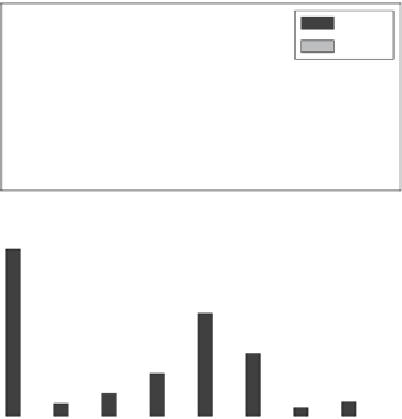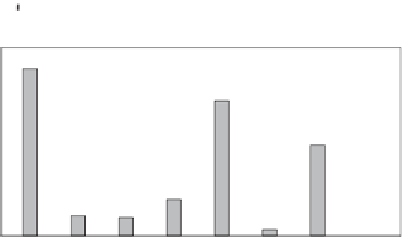Geoscience Reference
In-Depth Information
600
(a)
grass
forest
500
400
300
200
100
0
250
(b)
200
150
100
50
0
L
↓
L
↑
K
↓
K
↑
Q
*
LE
H
G
Energy balancecomponent
Figure 8.7
Components of net radiation and the surface energy balance for grass and
forest sites during summer months (June-August) in western Europe.
(a)
Climato-
logical values of the luxes during non-heat wave conditions.
(b)
Anomalies of the
components during heat wave conditions. (After Teuling et al., 2010)
8.4.3 Energy Balance during Heat Wave Conditions
In
Figure 8.6b
the anomalies of the energy balance terms are shown for heat wave
conditions. The irst obvious anomaly is in the incoming shortwave radiation, as heat
wave conditions are usually related to clear sky conditions. Apart from the extra sup-
ply of short wave radiation, there is also a slight increase in the incoming longwave
radiation (somewhat larger for forest than for grass). This is probably the net effect of
a decrease in
L
↓
due to a decrease in cloud cover and an increase in
L
↓
due to a higher
temperature and humidity content of the atmosphere (see
Chapter 2
). The upwelling
short wave radiation increases more for the grass than for the forest, consistent with
the higher albedo for grass. Finally, the upwelling longwave radiation increases stron-
ger for the grass than for the forest, indicating that the difference in surface tempera-
ture between grass and forest increases as compared to normal conditions (the grass
being warmer). The net effect of all four terms is that the forest has an extra 179 W
m
-2
available, whereas the net radiation of the grass increases by 136 W m
-2
, thus fur-
ther increasing the disparity between both surfaces in terms of available energy.
The response of both surfaces to this extra supply of energy is completely opposite.
Whereas the grass allocates nearly all extra energy input to the evapotranspiration,































































































Search WWH ::

Custom Search